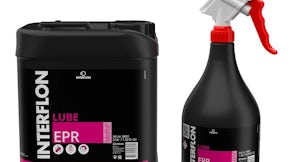Fish plate lubrication
Steel rails expand and contract due to temperature variations, reaching a critical temperature before expansion occurs. To accommodate this, a 6mm gap is left between the two rail ends. Fish plates, or rail joints, connect the ends of two rails into a continuous track.
Joints can become stiff due to corrosion, old grease, or over-tightened bolts. If a joint is stuck or too stiff, the track gauge will naturally widen. Recent independent laboratory testing undertaken by our rail clients has shown that their traditional greasing practices can actually cause joints to become much stiffer than they had originally thought!
Interflon Lube EPR has revolutionized the lubrication and performance of fish plates and breathers, as it is able to penetrate the joints without the need to dismantle them. This saves months of maintenance time on some routes. Once Interflon Lube EPR has penetrated, it provides a long-lasting, low-friction coating, improving joint performance and reducing friction by as much as 91%. It is also much safer and offers a 95% time saving compared to conventional treatments.
Good railway maintenance engineers generally plan two seasons ahead. This allows time to form plans, agree on access, order plant and materials, schedule resources, and so on.


